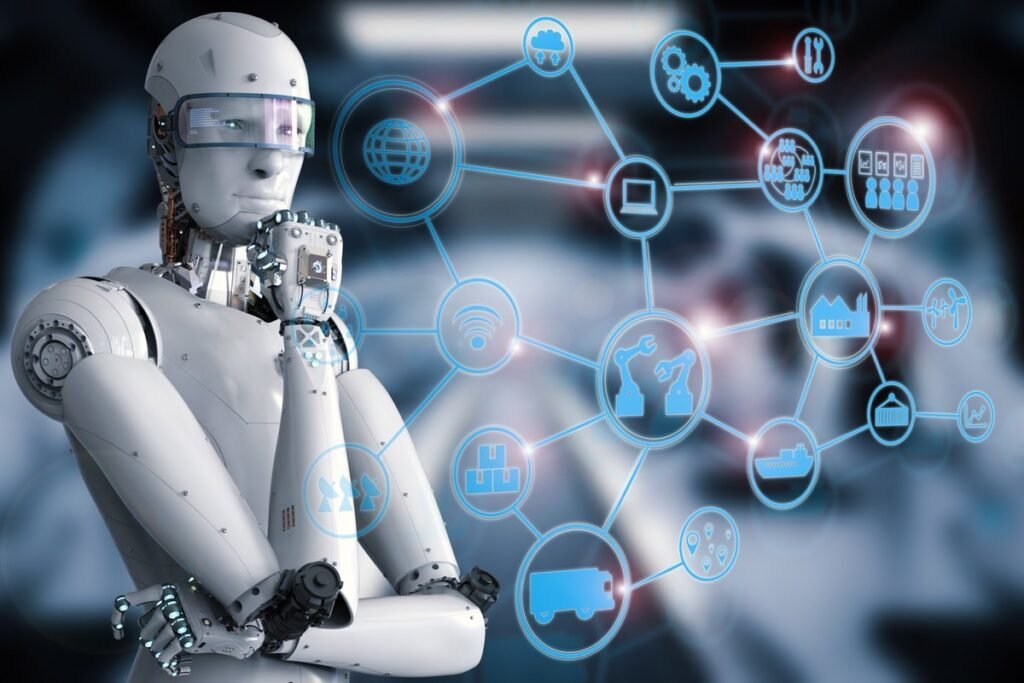What is Anti Booing Technology?
Anti booing technology refers to systems designed to detect and mitigate the effects of booing or jeering sounds from crowds at live events. These technologies utilize advanced audio processing and noise-cancellation techniques to identify and selectively filter out the harsh, disruptive frequencies associated with booing.
The primary purpose of anti booing technology is to enhance the viewing and listening experience for audiences, both at the venue and for those watching broadcasts or livestreams. By reducing or eliminating the disruptive impact of booing, these systems aim to provide a more enjoyable and immersive experience, particularly during sensitive moments like award presentations, speeches, or performances.
Anti booing systems typically work by employing an array of microphones strategically positioned around the event space. These microphones capture audio from various angles and feed the data into sophisticated algorithms that can differentiate between desired sounds, such as applause or cheering, and undesired sounds like booing or heckling.
While initially developed for live entertainment and sporting events, anti booing technology has found applications in various settings where disruptive audience behavior can detract from the intended experience, such as political rallies, corporate events, or even educational settings like lectures or seminars.
The Rise of Anti Booing Tech
The concept of anti booing technology emerged in the late 2000s as a response to the growing concerns over disruptive audience behavior at live events. Sports leagues, concert organizers, and broadcasters recognized the negative impact that excessive booing and jeering could have on the overall experience for attendees and viewers at home.
One of the early driving forces behind anti booing tech was the desire to maintain a high-quality broadcast experience. Excessive booing and jeering can distort audio feeds, making it difficult for viewers to clearly hear commentary or on-field sounds. This issue became particularly pronounced as broadcasting transitioned to high-definition and surround sound formats, amplifying the impact of disruptive crowd noise.
Initial anti booing systems were rudimentary, relying on manual audio filtering and noise cancellation techniques. However, as the technology advanced, more sophisticated solutions emerged, leveraging artificial intelligence and machine learning algorithms to identify and suppress booing in real-time.
The growth of anti booing tech was further fueled by the increasing commercialization of live events. Event organizers and leagues recognized the potential for disruptive behavior to tarnish the overall experience, potentially deterring sponsors and damaging brand reputations. By implementing anti booing measures, they aimed to create a more controlled and family-friendly environment, appealing to a broader audience.
Early adopters of anti booing technology included major sports leagues, particularly those with a global audience and lucrative broadcasting deals. Prominent use cases emerged in high-profile events like the Olympic Games, where organizers sought to present a positive image to the world.
As the technology matured and its benefits became more apparent, adoption rates increased across various sectors, including concerts, award shows, and political events. The ability to control and shape the audience experience became a valuable tool for event organizers and broadcasters alike.
How Anti Booing Systems Work
Anti booing technology employs sophisticated audio processing techniques to detect and mitigate the effects of booing sounds during live events. At the core of these systems are advanced microphone arrays and noise filters designed to isolate and identify booing from other crowd noises like cheering or clapping.
The microphone arrays utilize beamforming algorithms to pinpoint the direction and location of sound sources within the venue. By mapping the audio landscape, the system can differentiate between positive crowd reactions (cheers, applause) and negative ones (booing, jeering). This spatial awareness allows the anti booing filters to selectively target and suppress the undesired booing noises.
The audio processing pipeline incorporates intricate signal analysis and machine learning models trained to recognize the unique acoustic signatures of booing. These models examine the spectral characteristics, amplitude envelopes, and temporal patterns of the incoming audio signals, classifying them as either acceptable or unacceptable based on predefined thresholds.
Once a booing sound is detected, the system employs advanced noise cancellation techniques to counteract and neutralize the offending audio. This can involve generating inverse waveforms to destructively interfere with the booing, or selectively attenuating specific frequency bands associated with the unwanted noise.
Additionally, some anti booing systems incorporate real-time audio mixing and ducking capabilities, allowing them to dynamically adjust the levels of different audio sources. During a booing incident, the system can automatically reduce the levels of the crowd microphones while boosting the levels of the desired audio sources, such as commentators or on-field microphones, effectively masking the booing from the broadcast or in-venue audio feed.
The effectiveness of anti booing technology relies on the precise calibration and tuning of these audio processing algorithms, as well as the strategic placement of microphone arrays throughout the venue to ensure comprehensive coverage and accurate sound source localization.
Deploying Anti Booing at Venues
Anti-booing systems are typically deployed at sports venues, concert halls, and other live event spaces where crowd noise can disrupt the experience. The technology involves a strategic setup of microphones and audio processing equipment to detect and mitigate booing sounds in real-time.
A typical equipment setup includes an array of highly sensitive microphones strategically placed around the venue to capture audience noise. These microphones feed into a central audio processing unit that runs specialized algorithms to identify and isolate booing sounds. Once detected, the system can either filter out or actively cancel the booing frequencies through precise phase inversions and speaker arrays.
Integrating the anti-booing system with the venue’s broadcast audio is crucial to ensure a seamless experience for both in-person and remote audiences. The processed audio feed, with booing removed or reduced, is routed to the broadcast mix, ensuring a more pleasant listening experience for viewers at home.
Proper calibration of the anti-booing system is essential to account for the unique acoustics of each venue. Factors such as room size, shape, and materials can significantly impact sound propagation and reflection patterns. Technicians typically perform detailed acoustic modeling and on-site tuning to optimize the system’s performance, ensuring accurate detection and effective mitigation of booing sounds throughout the venue.
Anti Booing in Broadcasting
Broadcasting companies have been early adopters of anti-booing technology, particularly for live telecasts of sports events and award shows. The primary motivation is to censor audience booing and maintain a positive atmosphere for viewers at home.
Anti-booing systems deployed by broadcasters utilize sophisticated audio mixing and filtering techniques. Microphones placed around the venue capture ambient crowd noise, which is then processed by algorithms to identify and reduce the volume of booing sounds. This filtered audio feed is then mixed with the main program audio before being broadcast.
The use of anti-booing tech by broadcasters has sparked debates around censorship and freedom of expression. Critics argue that booing is a legitimate form of audience feedback and that muting it amounts to sanitizing the viewing experience. Broadcasters counter that excessive booing can create a negative environment, especially for family viewing, and that some moderation is necessary.
Controversies have erupted when audience members notice obvious disparities between the audible booing at the venue versus the muted jeers on the broadcast. Some viewers feel this censorship undermines authenticity and transparency. Broadcasters have defended the practice as a reasonable measure to uphold production values and protect advertisers’ interests.
Criticisms and Debates
Anti-booing technology has faced significant criticism from various stakeholders, raising concerns about censorship, free expression, and the authenticity of live events. Opponents argue that booing is a fundamental aspect of crowd participation and a legitimate form of expression, reflecting the passionate engagement of fans.
Critics also contend that anti-booing systems distort the genuine experience of attending live events. The thrill of being part of an energetic crowd, with all its raw emotions and spontaneity, is diminished when certain elements are artificially suppressed or altered. This perceived inauthenticity can alienate fans and damage the credibility of the event organizers.
Furthermore, there are concerns about the impact of anti-booing technology on broadcasting and media coverage. Broadcasters and journalists argue that manipulating crowd noise compromises the integrity of their reporting and deprives viewers of an accurate representation of the event. The authentic atmosphere, including both cheers and boos, is an integral part of the storytelling and immersive experience for audiences watching from afar.
Opponents also raise questions about the potential for abuse or misuse of anti-booing systems. There are fears that such technology could be employed to silence legitimate dissent or criticism, extending beyond its intended purpose of curbing offensive or disruptive behavior. This slippery slope could lead to a broader suppression of free expression and undermine the principles of open discourse and public accountability.
Legal and Ethical Considerations
Anti-booing technology raises significant legal and ethical questions around censorship, free speech, and broadcast regulations. While venues have the right to control atmospherics and remove disruptive individuals, selectively muting or altering crowd noise could be seen as a form of censorship.
Critics argue that booing is a legitimate form of expression, and attempting to silence it infringes on free speech rights. There are also concerns about sanitizing the live experience and misrepresenting the true atmosphere to television audiences.
From a regulatory standpoint, the Federal Communications Commission (FCC) has strict policies around profanity and indecency over public airwaves. Anti-booing systems that simply filter out offensive language could be permissible, but altering too much audio content raises questions of compliance.
Ultimately, deploying anti-booing technology involves weighing priorities around creating a controlled environment, protecting free speech, adhering to regulations, and authentically representing the live experience to viewers. Striking this balance will likely require careful policies and restraint in how the capabilities are utilized.
Prominent Anti Booing Vendors
These companies offer a range of products and services, leveraging advanced audio processing and noise cancellation techniques.
Boo Buster Systems, Inc. is a leading provider of anti-booing solutions, known for its patented BooShield technology. BooShield uses an array of microphones and speakers to detect and neutralize booing sounds in real-time. Boo Buster Systems claims to have captured over 60% of the market share in the sports and entertainment industries.
NoiseX Corporation is another prominent player in the anti-booing space. Their flagship product, SoundSoother, employs advanced algorithms to identify and cancel out booing and other disruptive noises. SoundSoother is highly scalable, making it suitable for both small and large venues. NoiseX has a strong presence in the concert and theater markets, with many high-profile clients relying on their technology.
AudioPure Technologies is a relative newcomer but has quickly gained traction with its innovative approach. Their anti-booing solution, PureSound, combines hardware and software components to deliver a seamless experience. PureSound’s unique selling point is its ability to adapt and learn from past events, continuously improving its performance over time. AudioPure has secured partnerships with several major sports leagues and music festivals.
While these companies dominate the market, there are also several smaller players offering niche solutions or catering to specific industries. However, the high cost of research and development, as well as the need for extensive testing and validation, creates significant barriers to entry for new competitors.
Emerging Techniques and Future Trends
As anti-booing technology continues to evolve, researchers and companies are exploring more advanced techniques to improve accuracy and effectiveness. One area of focus is developing more sophisticated filtering algorithms to better isolate and remove booing sounds from complex audio environments.
Additionally, there is growing interest in leveraging artificial intelligence (AI) and machine learning (ML) models for audio recognition and analysis.
Another emerging trend is the integration of anti-booing systems with social media sentiment analysis. By monitoring online conversations and reactions, these systems could potentially anticipate and preemptively mitigate booing before it even occurs at live events.
Furthermore, researchers are exploring the use of distributed microphone arrays and beamforming techniques to enhance the spatial resolution and directional filtering capabilities of anti-booing systems. This could enable more targeted suppression of booing from specific sections of a venue, while preserving the desired audio from other areas.
As these technologies advance, we can expect anti-booing systems to become more accurate, efficient, and seamlessly integrated into the live event experience.
The Experience Without Anti Booing
Before anti-booing technology became prevalent, booing was a common occurrence at live events, particularly in sports and entertainment venues. High-profile incidents of booing could significantly impact performers’ morale and the overall experience for both participants and audiences.
The constant jeering and taunting from the crowd created a hostile environment, affecting Wallace’s performance and potentially influencing the outcome of the game.
In the entertainment world, the 2011 Eurovision Song Contest witnessed a wave of booing directed at certain performers, marring the celebratory atmosphere of the event. The negative reaction from the audience was palpable, potentially damaging the artists’ confidence and detracting from their performances.
Such incidents highlighted the need for a solution to mitigate the impact of booing on performers and the overall event experience. Excessive booing could lead to decreased morale, disrupted focus, and even safety concerns in extreme cases. Performers and event organizers recognized the importance of creating a more controlled and respectful environment, paving the way for the development of anti-booing technology.


